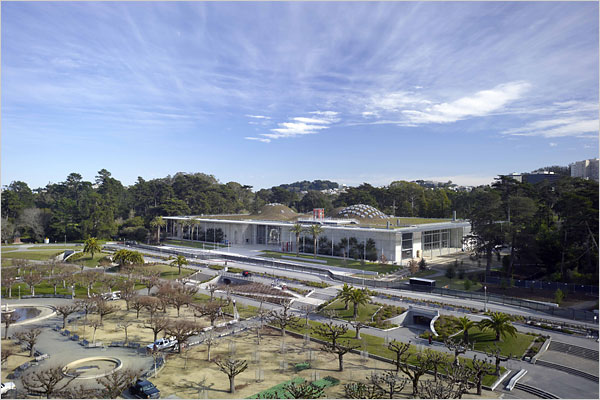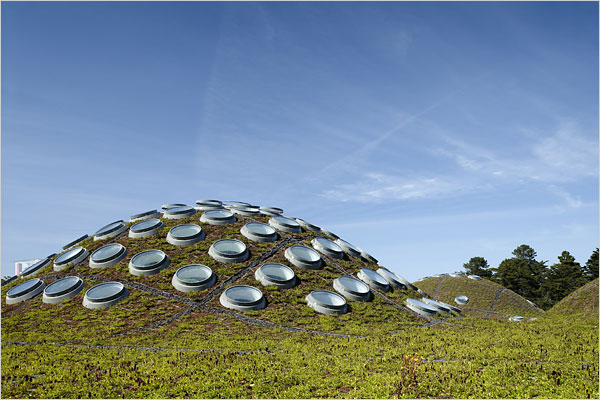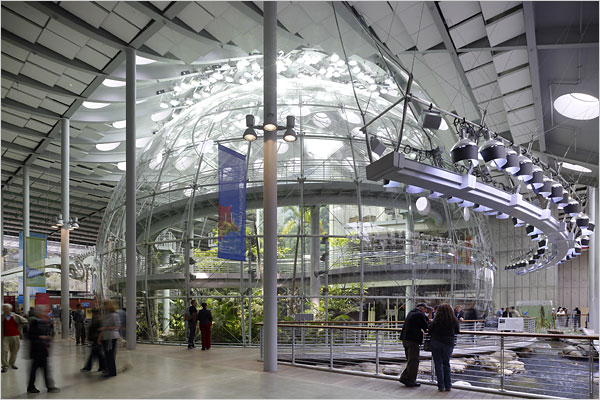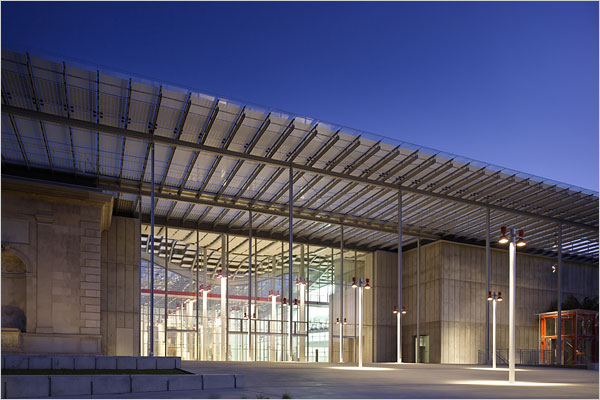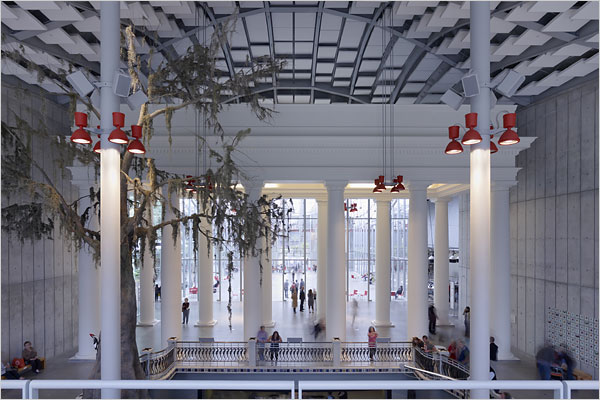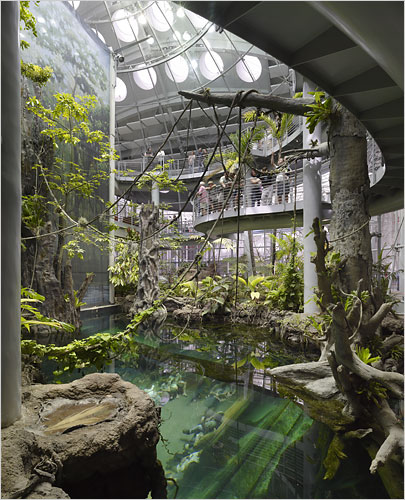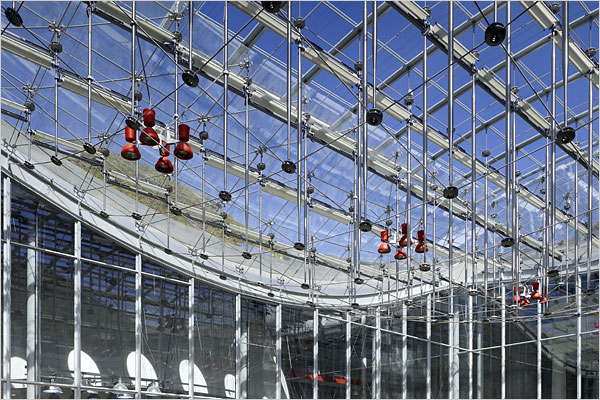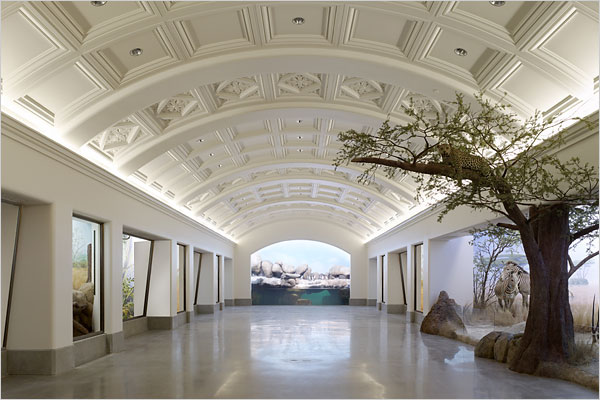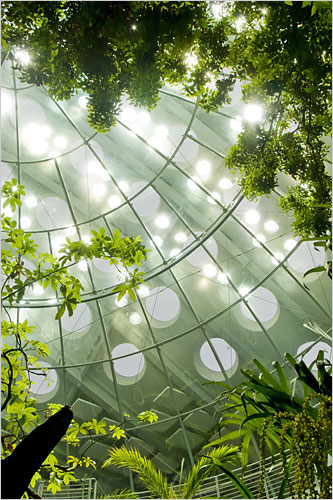An exterior view of the new California Academy of Sciences designed by the Italian architect Renzo Piano.
Nicolai
Ouroussoff writes: "If you want reaffirmation that human history is an
upward spiral rather than a descent into darkness, head to the new
California Academy of Sciences, in Golden Gate Park, which opens on
Saturday."
"Designed by Mr. Piano on the site of the academy’s demolished home,
the building has a steel frame that rests amid the verdant flora like a
delicate piece of fine embroidery. Capped by a stupendous floating
green roof of undulating mounds of plants, it embodies the academy’s
philosophy that humanity is only one part of an endlessly complex
universal system."
"This building’s greatness as architecture, however, is rooted in a
cultural history that stretches back through Modernism to Classical
Greece. It is a comforting reminder of the civilizing function of great
art in a barbaric age. The academy building is the last in a series of
ambitious projects to be conceived in and around the park’s Music
Concourse since the devastating 1989 Loma Prieta earthquake."
"Glimpsed through the concourse’s grove of sycamores, the science
academy gives the impression of weightlessness. A row of steel columns
soaring 36 feet high along the facade lends the building a classical
air; the sense of lightness is accentuated by a wafer-thin canopy above
that creates the illusion that the roof is only millimeters thick."
"A glass lobby allows you to gaze straight through the building to the
park on the other side. Other views open into exhibition spaces with
their own microclimates. The entire building serves as a sort of
specimen case, a framework for pondering the natural world while
straining to disturb it as little as possible."
"Mr. Piano’s building is also a blazingly uncynical embrace of the
Enlightenment values of truth and reason. Its Classical symmetry — the
axial geometry, the columns framing a central entry — taps into a
lineage that runs back to Mies van der Rohe’s 1968 Neue Nationalgalerie
and Schinkel’s 1828 Altes Museum in Berlin and even further, to the
Parthenon."
"The roof of the academy’s lobby, supported by a gossamerlike web of
cables, swells upward as if the entire room were breathing. Views open
up to the landscape on all four sides, momentarily situating you both
within the building and in the bigger world outside. A narrow row of
clerestory windows lines the top of the lobby. One of the building’s
many environmental features, these windows let warm air escape and
create a gentle breeze that reinforces the connection to the natural
setting."
"The museum has also preserved its African Hall, with its gorgeous
vaulted ceiling and dioramas of somnolent lions and grazing antelopes,
integrating it into the new design. Built in the 1930s, this
neo-Classical hall is a specimen of sorts. Its massive stone structure
reflects colonial attitudes about the civilized world as a barrier
against barbarism. It was intended as a symbol of Western superiority
and a triumph over nature."
"By contrast, Mr. Piano’s vision avoids arrogance. The ethereality of
the academy’s structure suggests a form of reparations for the great
harm humans have done to the natural world. It is best to tread lightly
in moving forward, he seems to say. This is not a way of avoiding hard
truths; he means to shake us out of our indolence."
